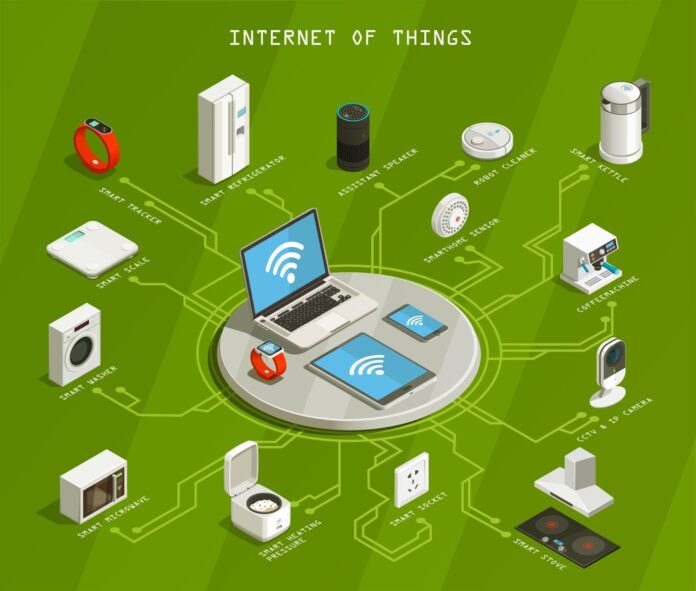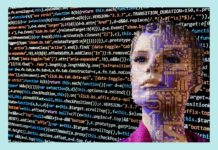1. Introduction
The Internet of Things (IoT) is a system of interrelated physical devices, vehicles, buildings, and other items, embedded with electronics, software, sensors, and network connectivity that enable these objects to collect and exchange data. IoT has emerged as a transformative technology, connecting an ever-increasing number of devices and allowing for the exchange of data and information in real-time. IoT has the potential to revolutionize the way we live and work, offering a wide range of benefits, from increased efficiency and convenience to improved safety and security. In recent years, IoT has been rapidly expanding, and its influence is expected to continue to grow in the coming years, shaping the future of many industries, including marketing.
Definition of the Internet of Things (IoT)
The Internet of Things (IoT) refers to a network of physical devices, vehicles, home appliances, and other items that are embedded with electronics, software, sensors, and connectivity, allowing them to collect and exchange data. The IoT concept extends the internet beyond traditional computing devices to a vast array of physical devices that can communicate and interact with each other over the internet. This interconnected network of smart devices has the ability to communicate, collaborate, and make decisions, thereby enabling new and innovative applications and services that were previously not possible. The IoT can provide real-time information, control and automation of various processes, and improve decision making by providing valuable data insights. The ultimate goal of the IoT is to create a seamless and connected world where devices can communicate and work together to make our lives easier and more efficient.
Overview of IoT’s impact on various industries
The impact of the Internet of Things (IoT) on various industries has been significant and far-reaching. IoT has the potential to revolutionize a wide range of industries by improving efficiency, reducing costs, and providing new and innovative services. Some of the industries that have been significantly impacted by IoT include:
- Healthcare: IoT has the potential to improve patient care, reduce medical costs, and streamline clinical processes by enabling remote monitoring and diagnosis, electronic health records, and real-time patient tracking.
- Manufacturing: IoT can improve production efficiency, reduce downtime, and increase product quality through real-time monitoring and control of manufacturing processes.
- Retail: IoT has the potential to revolutionize the retail industry by providing real-time inventory tracking, personalized shopping experiences, and improved customer service.
- Transportation: IoT can improve the efficiency and safety of transportation by enabling real-time tracking of vehicles, optimized routing, and predictive maintenance.
- Energy: IoT can improve energy efficiency and sustainability by enabling real-time monitoring and control of energy usage and generation.
- Agriculture: IoT can improve agricultural productivity and sustainability by enabling real-time monitoring and control of crop growth and livestock management.
- Home Automation: IoT can make homes more convenient, efficient, and secure by enabling remote control of home appliances, lighting, and security systems.
The impact of IoT on these and other industries is expected to continue to grow in the coming years, as the technology becomes more widespread and sophisticated.
Thesis statement: The Internet of Things will revolutionize marketing by providing valuable data insights and creating new opportunities for engagement with consumers.
Yes, that’s a great thesis statement! The Internet of Things (IoT) has the potential to greatly impact the marketing industry by providing valuable data insights that can inform and improve marketing strategies. With the increased connectivity of devices, marketers will have access to a wealth of data that can help them better understand consumer behaviour and preferences. This data can then be used to create more personalized and relevant marketing campaigns.
Additionally, IoT also presents new opportunities for consumer engagement, such as interactive experiences through smart devices, personalized marketing through the use of data insights, and increased accessibility and convenience for consumers. These new opportunities can help marketers build stronger relationships with their target audience and create a more engaging and memorable brand experience.
2. Data Insights from IoT Devices
The Internet of Things (IoT) refers to a vast network of connected devices that are capable of communicating with one another and sending and receiving data. IoT devices generate vast amounts of data, providing valuable insights into various aspects of daily life and business operations.
- Predictive maintenance: IoT devices can be used to monitor the performance of machinery and equipment, generating data that can be used to predict when maintenance is required. This helps businesses avoid costly breakdowns and improve efficiency.
- Energy management: IoT devices can be used to monitor energy consumption in homes and buildings, providing data that can be used to optimize energy use and reduce waste.
- Health and wellness: IoT devices such as fitness trackers and smart watches generate data about physical activity and sleep patterns, providing insights into personal health and wellness.
- Supply chain management: IoT devices can be used to track the movement of goods throughout the supply chain, providing real-time visibility into inventory levels and delivery times.
- Agriculture: IoT devices can be used to monitor environmental factors such as temperature, humidity, and soil moisture, providing valuable insights into crop health and optimizing yields.
Collection of data from connected devices
The collection of data from connected devices is a crucial step in the process of generating insights from IoT. Here are some of the key steps involved in collecting data from IoT devices:
- Device setup: The first step is to set up the IoT devices and configure them to transmit data to a central location. This typically involves specifying the type of data to be collected and the frequency at which it will be transmitted.
- Data transmission: The data generated by the IoT devices is transmitted to a central location, such as a cloud-based server or a local gateway. This can be done through a variety of methods, including Wi-Fi, cellular, or other wireless networks.
- Data storage: Once the data has been transmitted, it is stored in a database or data lake for further analysis. This storage must be secure, scalable, and accessible to the appropriate stakeholders.
- Data pre-processing: Before the data can be analyzed, it must be pre-processed to ensure that it is in the correct format and that any outliers or anomalies are identified and addressed.
- Data analysis: Once the data has been pre-processed, it can be analyzed using a variety of techniques, such as machine learning, statistical analysis, and data visualization. The insights generated from this analysis can be used to inform decision-making and drive business outcomes.
It is important to ensure that the collection of data from IoT devices is efficient, secure, and scalable, in order to maximize the value of the insights generated. This may involve investing in specialized tools and technologies, such as edge computing and data management platforms, to support the collection and analysis of large amounts of data.
Analysis of consumer behaviour and preferences
The analysis of consumer behavior and preferences is a crucial aspect of marketing and customer experience. With the increasing use of connected devices, IoT data provides valuable insights into consumer behavior and preferences that can inform marketing strategies and improve customer experiences.
Here are a few ways in which IoT data can be used to analyze consumer behavior and preferences:
- Smart home devices: IoT devices such as smart home hubs, smart locks, and smart thermostats generate data about consumer behavior within the home. This data can be used to understand patterns of usage, energy consumption, and preferences for different types of home automation.
- Wearable’s: IoT devices such as fitness trackers and smart watches generate data about physical activity; sleep patterns, and health metrics. This data can be used to understand consumer preferences for health and wellness products and services.
- Connected cars: IoT devices within connected cars generate data about driving behavior, such as speed, fuel consumption, and route patterns. This data can be used to understand consumer preferences for different types of vehicles and driving experiences.
- Retail and e-commerce: IoT devices within retail stores and e-commerce platforms generate data about consumer behavior and preferences, such as purchase history, product search patterns, and website navigation. This data can be used to personalize marketing and improve the customer experience.
Use of data to inform and improve marketing strategies
The use of data, including IoT data, to inform and improve marketing strategies is becoming increasingly important in today’s data-driven world. By analyzing consumer behavior and preferences, businesses can gain valuable insights into what drives customer engagement and make informed decisions about how to improve their marketing strategies.
Here are a few ways in which IoT data can be used to inform and improve marketing strategies:
- Personalization: IoT data provides insights into consumer behavior and preferences, which can be used to personalize marketing campaigns and improve the customer experience. For example, a retailer could use data from a customer’s previous purchases to make recommendations for future purchases.
- Segmentation: IoT data can be used to segment consumers based on their behavior and preferences, allowing businesses to tailor their marketing messages to specific groups of customers. For example, a car manufacturer could use data from connected cars to segment customers based on driving behavior and personalize marketing messages accordingly.
- Campaign optimization: IoT data can be used to measure the effectiveness of marketing campaigns, allowing businesses to optimize their marketing strategies and improve their return on investment. For example, a retailer could use data from in-store sensors to measure foot traffic and understand which marketing campaigns drive the most customers into their stores.
- Customer engagement: IoT data can be used to understand how customers interact with a brand and inform strategies for improving customer engagement. For example, a smart watch manufacturer could use data from fitness trackers to understand how customers use their products and inform product development and marketing strategies.
3. New Opportunities for Consumer Engagement
A.Interactive experiences through smart devices
Interactive experiences through smart devices are becoming increasingly popular as the use of IoT devices continues to grow. IoT devices, such as smart home hubs, smart speakers, and wearable devices, allow consumers to interact with technology in new and innovative ways, creating immersive and personalized experiences.
Here are a few examples of interactive experiences through smart devices:
- Smart home: With smart home devices, consumers can control and automate various aspects of their homes, such as lighting, temperature, and security, using voice commands or a mobile app. This creates a more convenient and personalized experience for the user.
- Voice assistants: Smart speakers and wearable devices equipped with virtual assistants, such as Amazon Alexa or Google Assistant, allow consumers to interact with technology using voice commands. This creates a more natural and intuitive experience for the user.
- Virtual and augmented reality: IoT devices, such as virtual and augmented reality headsets, allow consumers to interact with digital content in a more immersive way. This creates new opportunities for gaming, education, and entertainment experiences.
- Wearable’s: Wearable devices, such as smart watches and fitness trackers, provide interactive experiences that allow consumers to track their health and fitness goals and receive personalized recommendations.
B.Personalized marketing through use of data insights
Personalized marketing through the use of data insights is becoming increasingly important as consumers expect more relevant and personalized experiences from brands. By leveraging data insights, including those generated by IoT devices, businesses can tailor their marketing messages and campaigns to specific individuals, creating more relevant and engaging experiences for their customers.
- Customer profiles: By collecting data from various sources, including IoT devices, businesses can build detailed profiles of their customers. This information can be used to personalize marketing messages and improve the customer experience.
- Behavioral data: IoT data can provide insights into consumer behavior and preferences, such as purchase history, search patterns, and website navigation. This information can be used to personalize marketing messages and improve the relevance of product recommendations.
- Location-based marketing: IoT devices, such as smartphones and connected cars, can provide data about a customer’s location and movement. This information can be used to deliver targeted marketing messages and offers based on a customer’s location.
- Real-time marketing: IoT data can provide real-time insights into consumer behavior, allowing businesses to respond to customer needs and preferences in real-time. For example, a retailer could use data from in-store sensors to deliver targeted marketing messages to customers while they are in the store.
C.Increased accessibility and convenience for consumers
The use of IoT devices has increased accessibility and convenience for consumers in many different ways. By connecting various devices and systems, IoT technology has made it easier for consumers to control and interact with technology, leading to a more convenient and streamlined experience.
- Smart home: IoT devices, such as smart home hubs and smart lights, allow consumers to control and automate various aspects of their homes using a mobile app or voice commands. This makes it easier for consumers to manage their homes and creates a more convenient and personalized experience.
- Wearable’s: IoT devices, such as fitness trackers and smart watches, provide consumers with real-time information about their health and fitness, making it easier for them to track and monitor their progress.
- Voice assistants: Virtual assistants, such as Amazon Alexa and Google Assistant, allow consumers to interact with technology using voice commands, creating a more natural and intuitive experience.
- Connected cars: IoT technology has made it possible to connect cars to the internet, allowing drivers to control various aspects of their vehicles, such as navigation, entertainment, and climate control, using a mobile app or voice commands.
4. Challenges and Considerations for Marketers
As with any technology, the use of IoT devices raises concerns about privacy and security. These concerns stem from the fact that IoT devices collect and transmit large amounts of personal data, including information about a person’s behavior, location, and personal preferences. This data can be vulnerable to theft or misuse if not properly protected.
A.Privacy and security concerns
- Data breaches: IoT devices can be vulnerable to hacking, which can result in sensitive personal information being stolen or misused.
- Unauthorized access: IoT devices can be used to gain unauthorized access to a person’s personal data, including their location and personal preferences.
- Lack of control over data: IoT devices collect and transmit personal data, often without the user’s knowledge or consent. This can lead to a loss of control over personal information and a sense of vulnerability.
- Inadequate security measures: Many IoT devices lack proper security measures, making them vulnerable to hacking and other forms of cyber-attack.
- Vulnerable privacy settings: By default, IoT devices may have privacy settings that are not secure, leaving personal information vulnerable to unauthorized access.
B.Integration of IoT technology into existing marketing strategies
Integrating IoT technology into existing marketing strategies is a way for businesses to take advantage of the benefits of IoT and enhance the customer experience. Here are some ways in which businesses can integrate IoT technology into their marketing strategies:
- Customer engagement: IoT devices, such as beacons and smart watches, can be used to engage with customers in real-time and deliver targeted messages and offers based on their location or behavior.
- Personalized experiences: By leveraging data from IoT devices, businesses can deliver more personalized and relevant experiences to customers, including targeted product recommendations and personalized marketing messages.
- In-store experiences: IoT devices, such as in-store sensors and interactive displays, can be used to enhance the in-store shopping experience and provide customers with relevant and timely information about products and services.
- Event marketing: IoT devices, such as wearable’s and connected devices, can be used to enhance event marketing and create interactive and engaging experiences for attendees.
- Customer feedback: IoT devices can be used to collect real-time feedback from customers, allowing businesses to continuously improve their products and services and enhance the customer experience.
C.Ensuring a seamless user experience
Ensuring a seamless user experience is a critical component of any successful IoT implementation. A seamless user experience is one in which the technology is intuitive, easy to use, and provides a smooth and uninterrupted experience for the user. Here are some tips for ensuring a seamless user experience with IoT technology:
- User-centered design: The design of IoT devices should be based on user needs and behaviors, with the goal of making the technology as intuitive and user-friendly as possible.
- Interoperability: IoT devices should be designed to work together seamlessly, with a common user interface and consistent data sharing and exchange.
- Ease of use: IoT devices should be easy to set up and use, with clear instructions and intuitive interfaces.
- Robust connectivity: IoT devices should have robust connectivity, with the ability to seamlessly connect to other devices and systems.
- Personalization: IoT devices should allow for personalization, with the ability to tailor the experience to the individual user’s preferences and needs.
- Continuous improvement: IoT devices should be regularly updated and improved, with the goal of continuously enhancing the user experience.
Conclusion
In conclusion, IoT technology has the potential to revolutionize the way businesses approach marketing and customer engagement. IoT devices provide businesses with valuable data insights that can be used to deliver more personalized and relevant experiences to customers. Additionally, the integration of IoT technology into existing marketing strategies can enhance the customer experience and drive customer engagement and loyalty.
However, as with any new technology, there are also important considerations, including privacy and security concerns. It is important for businesses to be aware of these concerns and take steps to protect personal information, while still leveraging the benefits of IoT technology.
Ultimately, the significance of IoT in revolutionizing marketing lies in its ability to deliver more personalized and relevant experiences to customers, improve customer engagement, and drive business growth and success. As the adoption of IoT technology continues to grow, it will be increasingly important for businesses to understand and take advantage of its capabilities in order to remain competitive and meet the evolving needs of their customers.
Author Bio
William Shakes, currently working with Averickmedia is a content marketing expert with over seven years of experience in crafting compelling articles and research reports that engage and educate audiences. With a creative mind and a passion for words, William Shakes has helped countless brands connect with their target audience through high-quality, relevant content. In addition to their exceptional writing skills, William Shakes is also a skilled strategist, able to create and execute content marketing plans that drive measurable results for their clients. When not creating content, William Shakes can be found reading up on the latest industry trends or experimenting with new marketing tools and techniques.
Write and Win: Participate in Creative writing Contest & International Essay Contest and win fabulous prizes.
















